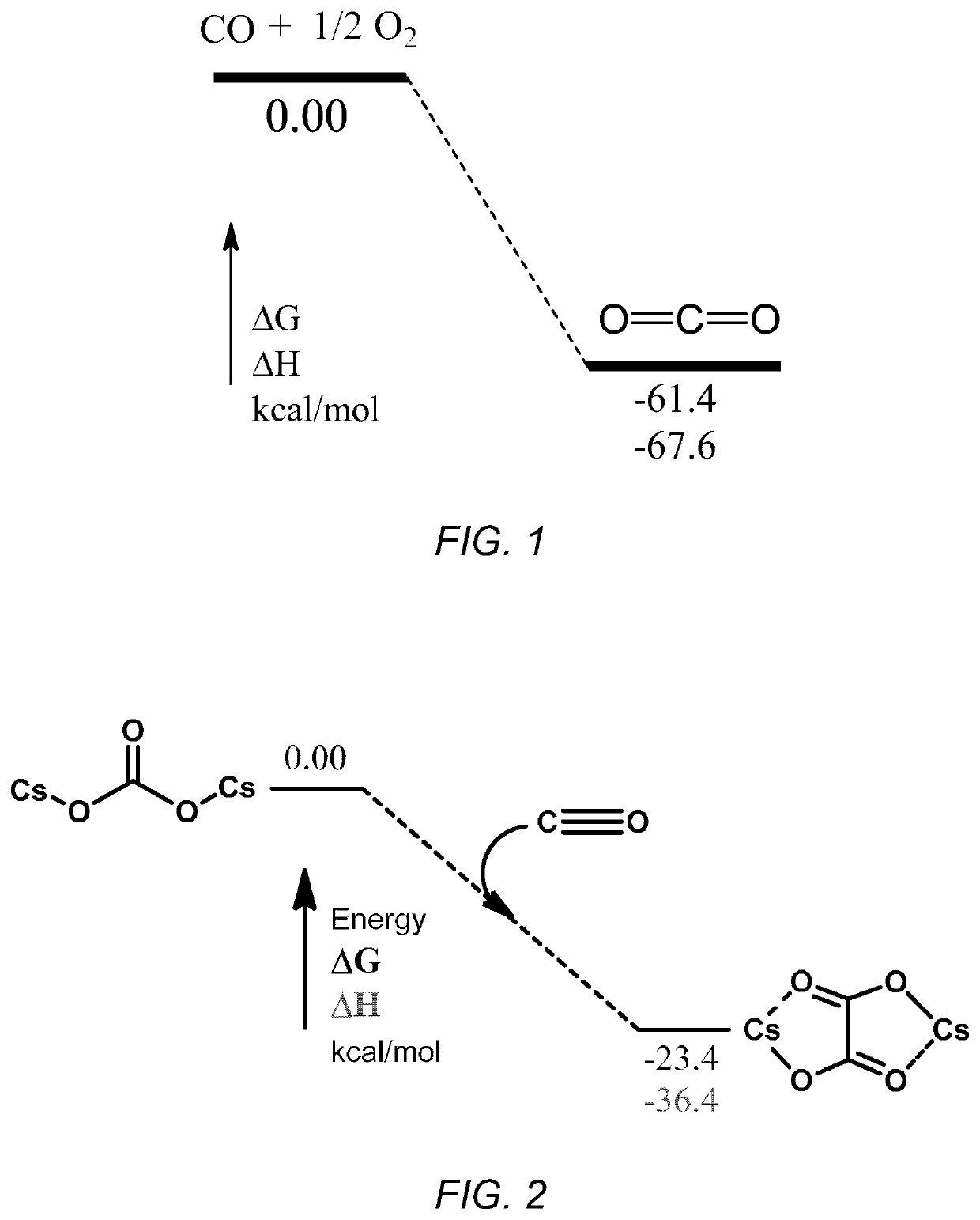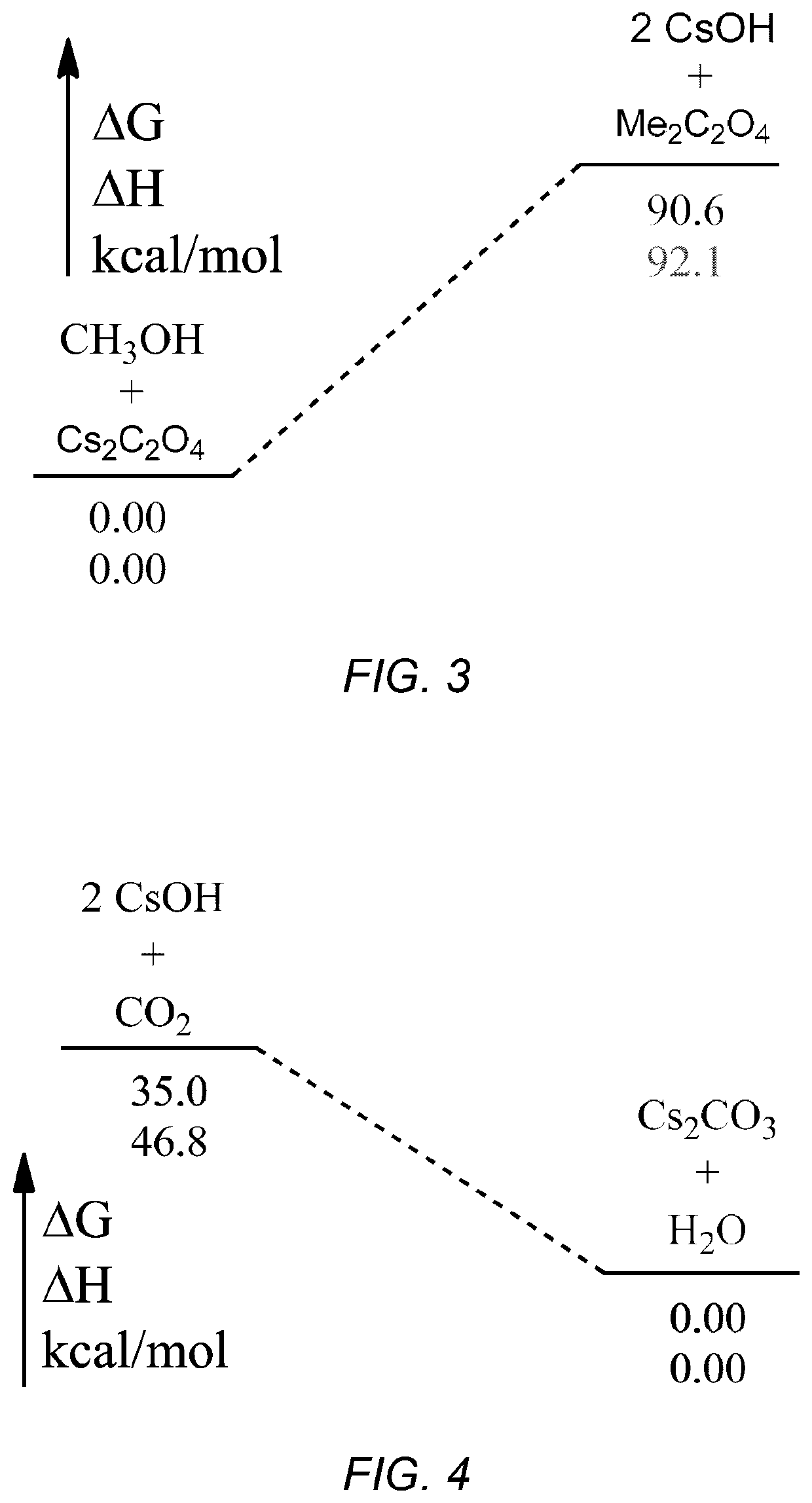Conversion of cesium carbonate to cesium oxalate
- Summary
- Abstract
- Description
- Claims
- Application Information
AI Technical Summary
Benefits of technology
Problems solved by technology
Method used
Image
Examples
example 1
One-Step Process for the Preparation of Dimethyl Oxalate with Cs2CO3, CO2, and H2
[0055]Cs2CO3 (500 mg, 0.15 mmol) was added to a 100 mL Parr reactor in a glove box. CO2 (35 bar, 3.5 MPa) and H2 (1 bar, 0.1 MPa) gases were then charged and the mixture was stirred for 1-2 hour at 325° C. and cooled to room temperature by applying cool air to the reactor. The reactor was cooled to 25° C. and depressurized. The reaction mixture contained cesium oxalate, cesium formate, and cesium bicarbonate. Methanol (5 mL) was added to the reactor, and the reactor was pressurized with CO2 (35 bar, 3.5 MPa). The mixture was heated to 150° C., stirred overnight, and then depressurized. The remaining solvent (methanol) was removed by evaporation under vacuum. The product composition was analyzed and identified as being a mixture of dimethyl oxalate, cesium formate, and cesium bicarbonate. The overall yield of DMO was 54% and yield of cesium formate as byproduct was about 4-5%. 13C NMR (CD3OD, in ppm): 5...
example 2
Two-Step Process for the Preparation of Dimethyl Oxalate with Cs2CO3, CO2, and H2
[0056]In the first step, Cs2CO3 (500 mg, 0.15 mmol) was added to a 100 mL Parr reactor in a glove box. CO2 (35 bar, 3.5 MPa) and H2 (1 bar, 0.1 MPa) gases were then charged and the mixture was stirred for 1-2 hour at 325° C. and cooled to room temperature by applying cool air to the reactor. The reactor cooled to 25° C. and depressurized. The reaction mixture was removed from the reactor. Analysis of the reaction mixture contained cesium oxalate, cesium formate, and cesium bicarbonate. In the second step, the reaction mixture and methanol (5 mL) were added to the reactor, and the reactor was pressurized with CO2 (35 bar, 3.5 MPa). The mixture was heated to 150° C., stirred overnight, and then depressurized. The remaining solvent (methanol) was removed by evaporation under vacuum. The product composition was analyzed and identified as being a mixture of dimethyl oxalate, cesium formate, and cesium bicar...
PUM
| Property | Measurement | Unit |
|---|---|---|
| Temperature | aaaaa | aaaaa |
| Temperature | aaaaa | aaaaa |
| Temperature | aaaaa | aaaaa |
Abstract
Description
Claims
Application Information
 Login to View More
Login to View More - R&D
- Intellectual Property
- Life Sciences
- Materials
- Tech Scout
- Unparalleled Data Quality
- Higher Quality Content
- 60% Fewer Hallucinations
Browse by: Latest US Patents, China's latest patents, Technical Efficacy Thesaurus, Application Domain, Technology Topic, Popular Technical Reports.
© 2025 PatSnap. All rights reserved.Legal|Privacy policy|Modern Slavery Act Transparency Statement|Sitemap|About US| Contact US: help@patsnap.com



